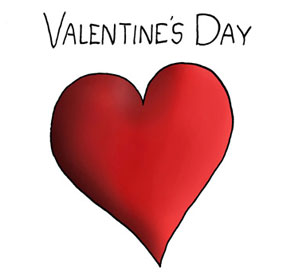
The History of Valentine's Day Cards
The history of Valentine’s Day card is commonly attributed to Hallmark Card company; and while there is no doubt that they (quite literally) capitalize on it, the tradition goes back much further!
St. Valentine and the Jailor's Daughter
First there is the (unsubstantiated) story that St. Valentine fell in love with his jailor’s daughter while in prison prior to his execution in the 3rd century (see this page) . St Valentine is said to have written to the woman and signing it “from your Valentine”, making this the first Valentine’s card.
1832 - Chaucer
What is more definitely known is that in 1382, Geoffrey Chaucer wrote his poem Parliament of Foules. This poem contains the lines:
For this was on seynt Volantynys day
Whan euery foul comyth there to chese his mak
1415 - French Duke
And then in the 15th century, February 14th became feast day celebrating romantic love in France. The Duke of Orleans, while imprisoned in the Tower of London following the 1415 battle of Agincourt, wrote to his wife a card referring to her as his "sweet Valentine":
Je suis desja d'amour tanné
Ma tres doulce Valentinée
This card really exists; it remains in the manuscript collections of the British Library. The library also has a letter from Margery Brews to her fiancé John Paston in 1477, referring to him as her “right well-beloved Valentine”.
1600's - Shakespeare
By the 17th century Valentine’s Day gets a mention in Shakespeare’s Hamlet, when Ophelia is given the lines:
To-morrow is Saint Valentine's day,
All in the morning betime,
And I a maid at your window,
To be your Valentine.
1700's - Roses are Red...
However, it was in the 18th century that the most familiar Valentine’s poem made its first appearance. These lines, found in a collection of nursery rhymes printed in 1784, read:
The rose is red, the violet's blue,
The honey's sweet, and so are you.
and Valentine's cards become popular
The first Valentine’s cards were handmade cards which were slipped secretly under the door of the lover or tied to a door-knocker. By 1806, the first were through the mail (or "Post"). Starting out has hand-made cards; people would decorate paper cards with romantic symbols and often included poetry. .
Pre-printed cards did start to appear in the late 1700's in Britain, but hand made cards were still commonplace until manufactured cards appeared in greater numbers from 1820 to 1840.
You can see many examples of these printed cards; there are many Victorian-era Valentine’s cards still in existence, such as the collection of more than 1,700 examples at the Museum of London.
Click here to see the world's first printed Valentine's Day card, sent on 12th January 1797 by sent by Catherine Mossday to Mr. Brown of Dover Place, Kent Road, London, UK, with this printed around the edge:
"Since on this ever Happy day,
All Nature's full of Love and Play
Yet harmless still if my design,
'Tis but to be your Valentine."
Mid-1800's - The custom crosses the Atlantic
In the mid-1800's Valentine's Day cards became popular in America and become mass produced more inexpensively. But not all approved of the practice! The New York Times published an editorial on February 14, 1856 sharply criticizing the practice. But, perhaps because by 1865, with gloom of the Civil War ending, the practice of sending Valentine's Cards soared; New Yorkers mailed more than 66,000 Valentines in 1865, and more than 86,000 in 1866.
1900's - In comes Hallmark Cards
In 1913, Hallmark Cards of Kansas City, Mo., began mass producing valentines.
And Valentine’s Day has today includes, not just cards, but also flowers, jewelry, perfume and chocolates.
And do you know the history of Valentine's Day?
References:
- HistoryExtra: A brief history of Valentine's Day cards
- History.com
- BBC - World's First Printed Valentine's Day Card
- About Education
&
- Get a Lego rose for your child to make, on Amazon
- Spice up Valentines Day with this Womens Unwrap Me Babydoll Lingerie, See Through Mesh Lace Outfit Red Bow, A Christmas Day Gift for Him
- Everyone likes an Amazon Gift Card
- Valentine's Women Lingerie Lace Babydoll Strap Chemise Halter Teddy V Neck Mesh Nightgown
- This Avidlove Lingerie for Women Lace Babydoll Sleepwear is VERY popular!
- Women like this Simone Perele Women's Delice Demi Cup Bra
- Women (and their men) love this comfy beautiful lace babydoll outfit